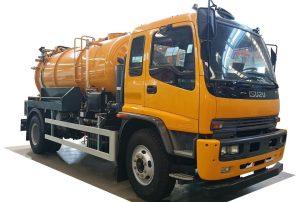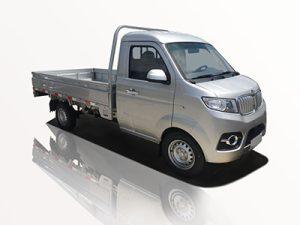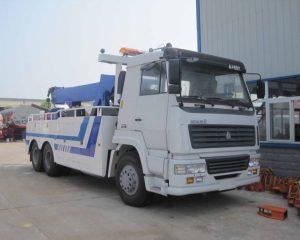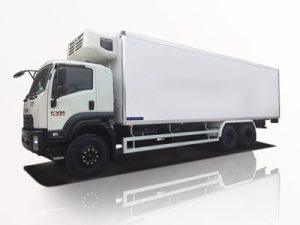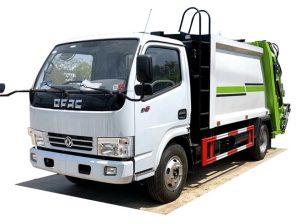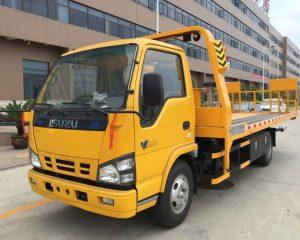Monday to Saturday - 8:00 -17:30
How Much Horsepower Does a Fire Truck Have?
Fire trucks are essential vehicles for firefighting and emergency rescue operations. They are equipped with a variety of tools and technologies designed to help firefighters in their duties. One important aspect of fire trucks is their horsepower, which plays a significant role in their performance and efficiency. In this article, we will explore the horsepower of fire trucks, factors influencing their power, different types of fire trucks, and much more.
Understanding Horsepower in Fire Trucks
The term “horsepower” refers to a unit of measurement used to indicate the power output of an engine. In the context of fire trucks, it is crucial because it influences the vehicle’s speed, acceleration, and ability to carry heavy loads. Higher horsepower means that a fire truck can respond to emergencies more quickly and effectively.
What is Horsepower?
Horsepower (hp) is defined as the amount of work done over time. One horsepower is equivalent to 550 foot-pounds per second or about 746 watts. In simpler terms, it measures how effectively an engine can perform work. Fire trucks typically employ large diesel engines designed to deliver significant horsepower to handle the demands of firefighting.
Why is Horsepower Important for Fire Trucks?
Horsepower is vital for several reasons in the context of fire trucks:
- Speed: Higher horsepower enables fire trucks to accelerate more rapidly, reducing response times during emergencies.
- Load Capacity: Fire trucks must carry heavy equipment, hoses, and water. More horsepower allows them to maintain stability and traction under heavy loads.
- Mechanical Performance: Higher horsepower ensures that fire trucks can operate efficiently, even in challenging conditions such as steep terrains or adverse weather.
Horsepower Ratings of Different Fire Trucks
Fire trucks come in various designs and horsepower ratings. Here is a breakdown of the horsepower ratings for different types of fire trucks:
Type of Fire Truck
| Type of Fire Truck | Typical Horsepower Range |
|---|---|
| Pumper Truck | 300 – 1,000 hp |
| Aerial Ladder Truck | 400 – 700 hp |
| Tankers | 250 – 600 hp |
| Brush Trucks | 150 – 300 hp |
| Rescue Trucks | 300 – 500 hp |
Factors Influencing Horsepower in Fire Trucks
Engine Size and Type
The size and configuration of the engine significantly influence the horsepower of a fire truck. Larger engines generally provide more horsepower due to their ability to burn more fuel and produce greater power output. Diesel engines are commonly used in fire trucks because they are designed to handle heavy loads and provide more torque than gasoline engines.
Weight of the Vehicle
The overall weight of a fire truck can impact its required horsepower. Heavier vehicles require more power to ensure mobility and handle obstacle loads effectively. Fire trucks must balance weight with horsepower to maintain performance and stability.
Purpose of the Fire Truck
Different fire trucks are built for unique purposes. Pumper trucks, designed to transport water and firefighting equipment, typically possess higher horsepower to ensure they can manage heavy loads. Alternatively, brush trucks may require less horsepower and focus on maneuverability for off-road conditions.
The Evolution of Fire Truck Horsepower
Fire truck horsepower has evolved significantly over the years, influenced by advancements in engine technology and safety regulations. In earlier models, fire trucks had engines with limited horsepower, often hampering their response times and overall efficiency. With modernization, fire trucks have become equipped with powerful engines that provide superior performance.
Historical Context
In the early 20th century, fire trucks were powered by relatively weak steam engines. As internal combustion engines became prevalent, the horsepower in fire trucks increased rapidly, leading to the development of faster and more capable vehicles.
Modern Innovations
Today, fire trucks can be equipped with advanced technologies such as hybrid electric systems, which enhance fuel efficiency while maintaining high horsepower levels. These innovations allow fire departments to operate more cost-effectively and minimize their environmental impact.
Examples of Popular Fire Truck Models and Their Horsepower
Knowing specific fire truck models and their horsepower can provide insights into how fire trucks are used in various situations. Here are some examples:
1. Pierce Arrow XT
The Pierce Arrow XT is known for its versatility and high performance.
- Horsepower: 500 – 700 hp
- Uses: Primarily used as a pumper truck with excellent maneuverability.
2. E-One Typhoon
The E-One Typhoon is another popular model among fire departments.
- Horsepower: 450 hp
- Uses: Used mainly for urban firefighting scenarios.
3. KME Predator
This model offers a combination of power and efficiency.
- Horsepower: 500 – 600 hp
- Uses: Suited for pumper and rescue operations.
Practical Considerations for Fire Departments
Choosing the Right Fire Truck
When selecting a fire truck, departments must consider the following factors:
- Response Times: Higher horsepower can lead to quicker responses, which is critical during emergencies.
- Maintenance Costs: More powerful engines may require more frequent maintenance and fuel, impacting the department’s budget.
- Terrain and Environment: Different environments may necessitate different horsepower requirements.
Budgeting for Fire Truck Purchases
Fire truck purchases can represent significant investments. Budgeting for the initial purchase, insurance, and ongoing maintenance is critical. Departments should also evaluate funding options, including grants and partnerships.
Fire Truck Operation Protocols
Best Practices for Fire Truck Safety
The operation of fire trucks requires adherence to safety protocols:
- Pre-operation inspections to ensure engine integrity and lighting systems are functional.
- Regular training for drivers on emergency handling and maneuvering.
- Adherence to road safety regulations, including speed limits and right-of-way rules.
Effective Use During Emergencies
Fire truck operators must be well-trained to use the vehicle effectively during emergencies:
- Knowledge of the area and potential hazards.
- Ability to work in coordination with other emergency services.
- Efficient deployment of equipment based on the situation at hand.
FAQs about Fire Truck Horsepower
1. What is the average horsepower of a fire truck?
The average horsepower of a fire truck typically ranges from 300 to 1,000 hp, depending on the type of truck and its intended use.
2. How does horsepower affect a fire truck’s performance?
Higher horsepower allows fire trucks to accelerate faster, maintain speed while carrying heavy loads, and perform better in challenging conditions.
3. Are all fire trucks powered by diesel engines?
While most fire trucks use diesel engines for their power and efficiency, some smaller trucks may utilize gasoline engines. However, diesel engines are preferred for their torque and durability.
4. Why do fire trucks have different horsepower ratings?
Different fire trucks are designed for specific tasks, which influences the horsepower they require. Pumper trucks need higher horsepower to carry more equipment, while brush trucks may need less due to their focus on maneuverability.
5. How often should fire trucks be maintained for optimal performance?
Regular maintenance should be conducted according to the manufacturer’s guidelines but typically includes inspections every 2,000 to 5,000 miles or at least annually.
6. What can affect the longevity of a fire truck’s engine?
Factors such as maintenance practices, driving conditions, load capacity, and the quality of fuel used can all impact engine longevity and performance.




